Is it possible to water flowers with tea and how to do it correctly?
Many flower growers know about watering indoor plants with tea. Tea leaves are often used as organic fertilizer, however, much more nutrients are contained in liquid form, so watering with tea leaves is considered more useful. This method has many supporters and opponents. Some believe that such feeding will not bring much benefit, others - that, if used correctly, the effect will be amazing.
Content:
- Composition and benefits of tea brewing
- Features and rules of application
- Advantages and disadvantages of the method
Composition and benefits of tea brewing
Tea has long been considered a healthy drink, but it must be used in dosage and properly brewed in order for it to be beneficial. This also applies to indoor plants.
The trace elements contained in the tea will help the flower grow, bloom and bear fruit better. Florists believe that watering flowers with tea is necessary as a regular feeding. But it must be borne in mind that not all flowers and not in every period of growth need feeding.
First you need to determine the needs of the plant and the level soil acidity, since the tannins contained in tea reduce the acidity level.
The composition of tea contains the following substances useful for plants:
- Potassium. The brew is rich in potassium, which has an important function - it promotes the growth and ripening of fruits. Tea contains it in moderation, so you don't have to worry about an overdose of potassium.
- Calcium. Calcium is an important participant in carbohydrate and protein metabolism. Normal formation largely depends on calcium root system plants.
- Magnesium. Magnesium is part of chlorophyll. Accordingly, when magnesium is insufficient, photosynthesis deteriorates, the plant becomes weak, grows slowly, and the leaves turn yellow.
- Manganese. This trace element is involved in photosynthesis and synthesis of vitamins. It is responsible for the normal growth and development of the plant's root system.
Tea contains other trace elements, but they are few, so the effect will not be too noticeable for the plant. Also, a useful property of welding is a decrease in the level of aluminum, which slows down plant growth and negatively affects yields.
Also, tea leaves can be used dry for fertilization, mulching soilcreating drainage. The infused mulch allows moisture to stay in the soil longer, so the plant will not require frequent watering.
Features and rules of application
In order for the brew to be beneficial, not harmful, you need to use it correctly. Tea cannot be considered harmless, as it contains not only useful substances. The danger lies in both overdose and misuse of this fertilizer.
When using tea leaves, you must adhere to the following rules:
- The tea must be pure that there are no flavors or flavors. They will only harm the plant.
- The choice of tea is determined by the needs of the plant. You can use green, black or herbal tea, as long as it is not strong.
- You do not need to add sugar to the tea leaves. Although it is believed to be beneficial, sugar can cause mold and mildew to form and attract various insects. Also, the root system can die from sweet tea.
- Sleep tea can be used, but it should be fresh, that is, there should be no smell or traces of mold on it.
- Tea is not water, you cannot water plants with it every day. Such dressings are carried out either once a week, or only when a plant is transplanted.
- To prevent mold or bugs from growing in the flower pot, the tea leaves can be used dry. The amount of nutrients in it is less, but the likelihood of harming the flower is reduced.
- If the tea leaves are used as mulch, it should be lightly sprinkled with soil. First, the soil is loosened, the tea leaves are added, and the top is sprinkled with soil again. Do not leave the tea leaves on the surface, as bugs and midges will start in it.
- Tea can be used warm or at room temperature. Boiling tea can kill the plant. The best option is tea, the temperature of which is 30-40 degrees.
It is worth remembering that tea leaves as a fertilizer are not useful for all plants. Florists believe that cacti and ferns respond best to such feeding.
Advantages and disadvantages of the method
Fertilizing and watering with tea leaves have both pros and cons. The main advantage of this method is its availability. There is a tea pot in every home and it is quite simple to use it. There is no need to look for special fertilizers and dilute them in a special way. At the same time, the benefits of tea brewing have long been known.
Among the advantages of this method are the following facts:
- The tea leaves scare off cats. Cats quite often gnaw the plants, throw the soil out of the pot. To ward off pets, growers use various methods, for example, citrus peels. But no less effective is the brew, the smell of which scares away cats.
- You can use the infuser in a variety of ways. In addition to watering, the tea leaves serve as mulch or even drainage. When transplanting a plant, it is recommended to supplement the drainage with tea leaves. By the time the roots grow to the bottom of the pot, the tea leaves will rot and make an excellent fertilizer.
- Ease of use. It is enough just to water the plant with the rest of the tea. This is a simple procedure that anyone can do.
The method also has several disadvantages. For example, not every tea will work. It should be clean, no additives, and fresh. The presence of any chemical impurities will lead to a negative result. Waterlogging is also a negative factor. Often the use of tea leaves can lead to chlorosis. You also need to monitor the strength of the tea. Too strong tea will harm the flower, and too weak will not be effective enough.
The disadvantage of this method is its non-universality. Not all plants love such fertilizers. If the flower prefers acidic soil, then after watering with tea, it will begin to hurt.
More information can be found in the video:



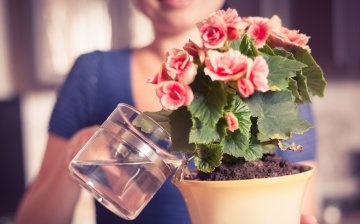
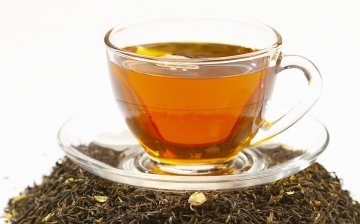
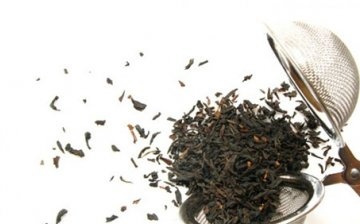
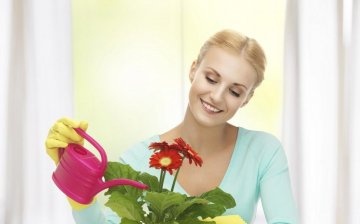





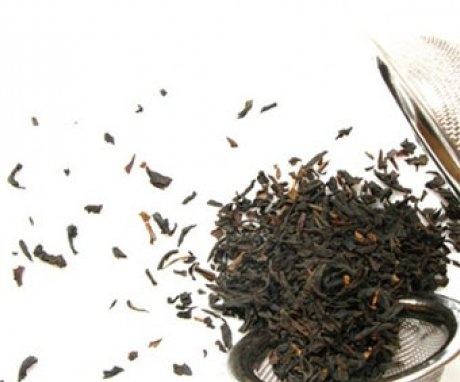

We never water potted flowers with tea leaves, because it contains tannins that negatively affect the root system of the flower. In addition, it is not clear from the article whether to leave the tea leaves in the pot, or after watering, remove it each time.
We do not water it with tea leaves and we believe that there are many products for indoor plants on sale for adding to water. Tea is already too much) For the same reason, we do not use used tea bags in home floriculture. We buy granules.
Today I was visiting my grandmother and asked her if it is possible to water house plants, incl. flowers with tea. I was surprised when she looked at me like an idiot) She said that she had never watered and had never heard, in her entire life, that one of her friends "fed" the flower at home with tea.
You can say I'm a novice florist. On the advice of my mother, I feed the flowers with tea only during transplantation and in small doses. For this I took green leaf tea.For the rest, I usually use purchased fertilizers.